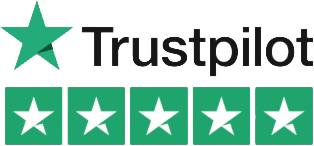What is the Difference Between Male and Female Cannabis Plants?
Understanding the differences between male and female cannabis plants is crucial for successful cultivation. As cannabis is a dioecious plant, it has distinct male and female individuals that play different roles in the plant's life cycle.
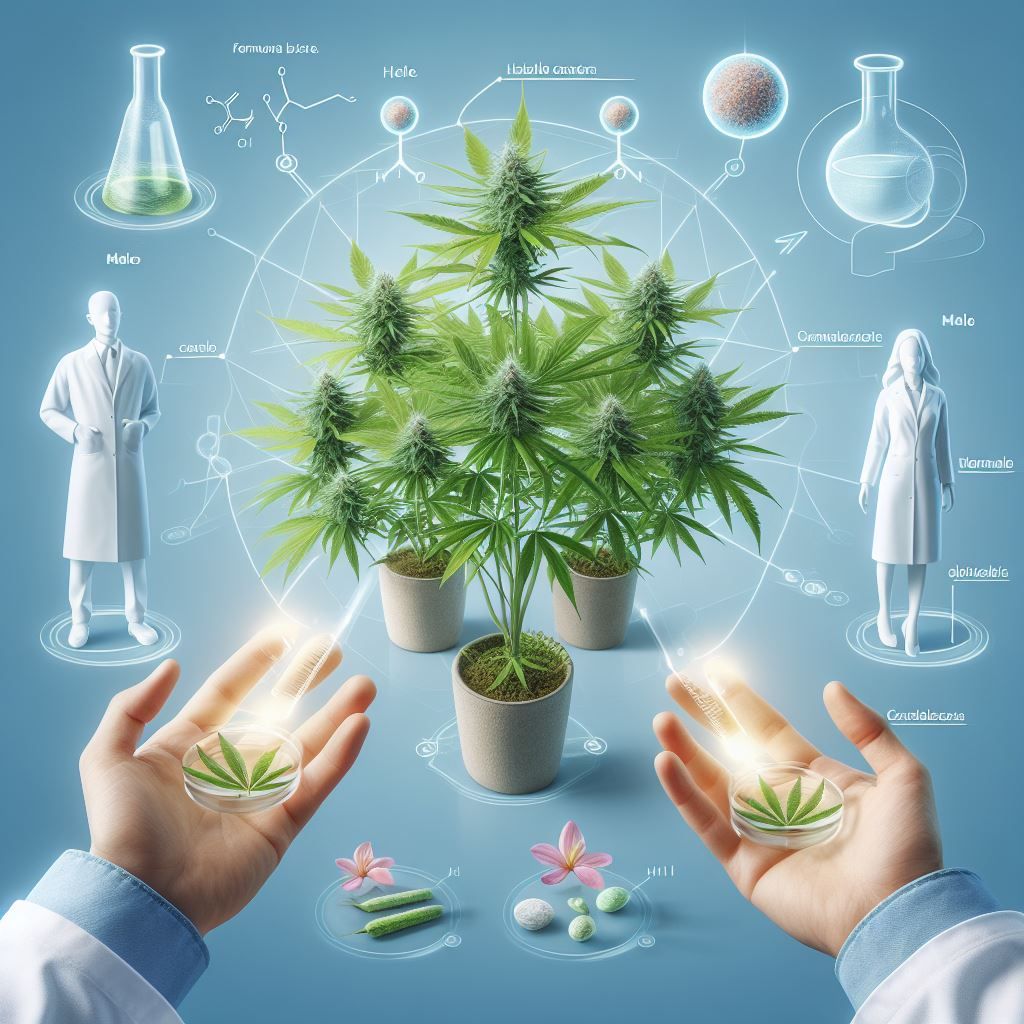
The Scientific Explanation of Male and Female Cannabis Plants: An In-Depth Guide
Male cannabis plants produce pollen which fertilizes the female flowers to produce seeds. Female plants produce the cannabinoid-rich buds that are harvested for consumption. Without pollination from males, the unfertilized female flowers continue to produce more cannabinoid-rich resin.
Therefore, most growers cultivating cannabis for CBD or THC prefer to grow only female plants. However, the interaction between male and female plants is an integral part of the cannabis life cycle in nature.

This introduction provides an overview of how gender shapes the cannabis cultivation process, from germination to harvesting. Understanding these dynamics is key to maximizing crop quality and yield.
Biological Basics

Cannabis plants have a complex reproductive process. They are dioecious plants, meaning each plant is distinctly male or female. The male plants produce pollen which fertilizes the female plants. The female plants then produce seeds which contain genetic material from both parents.
Monoecious plants like corn have both male and female flowers on the same plant. But cannabis plants have separate male and female individuals. Growers need to identify and isolate male cannabis plants to prevent pollination if the goal is to produce high-THC sinsemilla flowers.
Reproductive Process
During the vegetative stage, male and female cannabis plants look nearly identical. It is impossible to distinguish them until they begin flowering.
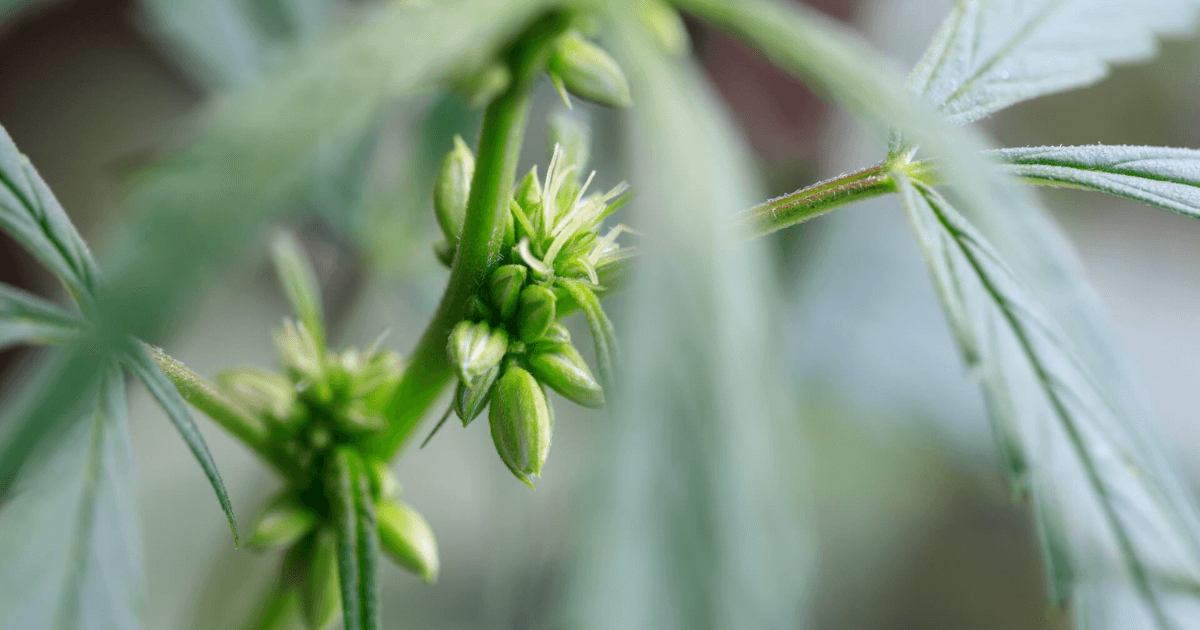
Male plants develop small pollen sacs on stalks along the branches. The sacs open and release pollen which fertilizes female flowers through the air. A single male plant can pollinate many females across a large area.
Dioecious vs. Monoecious
Dioecious plants like cannabis have male and female reproductive organs on separate plants. This encourages cross-pollination between different plants.
Monoecious plants like corn and squash have male and female flowers on the same plant, encouraging self-pollination. Monoecious cannabis varieties do exist but are less common.
For most growers, it is essential to control pollination by removing all male plants. Monoecious varieties can be harder to manage since both sexes are interspersed.
Male Cannabis Plants

Male cannabis plants play a vital role in the reproduction cycle of the cannabis plant, even though they do not produce the usable buds that contain high levels of cannabinoids. There are several key characteristics that help identify male plants.
Characteristics and visual indicators of male cannabis plants
Some distinguishing features of male plants include:
- Pre-flowers tend to have small sacs rather than the teardrop shape of female flowers
- Thicker stalks compared to females
- Fewer leaves, generally between 5-9
- Do not produce usable buds
- Flowers grow in small, dangling, bell-shaped clusters that open to release pollen
So in summary, male plants can be identified by their pollen sacs, less dense foliage, thicker stalks, and lack of smokable buds.
The role of male plants in the reproduction cycle
While female plants produce the cannabinoid-rich buds, male plants play an equally important role by providing the pollen necessary for fertilization. Here is the reproduction process involving males:
- Male plants produce pollen sacs filled with pollen grains
- When the pollen sacs open, the pollen is released and carried by wind or insects to the sticky pistils of female flowers
- Pollen grains adhere to the pistils and make their way down to fertilize the female plant's ovaries
- Fertilization leads to seed production in the female flowers
So in essence, the male plant enables the female plant to produce cannabis seeds by providing the pollen for fertilization. Although less valued by cannabis growers interested in bud production, male plants are vital for breeding programs or seed production.
Female Cannabis Plants

Female cannabis plants play a critical role in reproduction and seed production. Unlike male plants, females develop buds containing the reproductive organs that produce seeds after pollination. The anatomy of the female flowers includes stigmas that trap pollen from male plants to initiate fertilization.
Characteristics and Visual Indicators of Female Cannabis Plants
Female cannabis plants can be identified by the development of small, v-shaped pre-flowers after about 4 weeks of growth. Over time, these pre-flowers mature into large, resinous buds in a variety of colors like green, purple, or blue. The buds are covered in tiny hairs called trichomes that secrete sticky resins to protect the reproductive structures.
Significance of Female Plants for CBD and THC Production
The resinous buds of female cannabis plants contain high concentrations of cannabinoids like THC and CBD, as well as other medicinal compounds like terpenes. These sticky resins coat the reproductive structures and play a defensive role against environmental threats. Growers cultivating cannabis for medicinal uses rely exclusively on unpollinated female plants, as fertilization redirects energy into seed production rather than high resin yields.
In contrast, male plants produce pollen sacs but do not form buds. While they play an important role in fertilization, male plants have limited uses for growers focused on cannabinoid or resin production. However, both sexes are required for breeding new hybrid strains.
Visual Identification
Identifying the sex of cannabis plants is crucial for cultivators. There are several key visual differences between male and female plants that can help determine their gender before flowering.
Pre-flowering Indicators
Even before flowering, there are some signs that may indicate whether a plant is male or female:
- Females tend to be shorter and bushier than males in the pre-flowering stage
- Males have thinner stems and longer spaces between leaf pairs (internodes) compared to females
- Females may reveal the early formation of bud sites before flowering
Morphological Differences
Once flowering begins, male and female plants exhibit distinct physical characteristics:
- Males develop small green balls that are clustered together - these are pollen sacs
- Females form white hairy pistils that emerge from calyxes (pods) and cluster into buds
- Males are often taller and lankier, while females are shorter and bushier
- Females have more leaves and lateral branches due to increased vegetative growth
Carefully observing these gender-specific traits can allow cultivators to identify and separate male and female plants early on to optimize their cannabis crop.
The Role of Hermaphrodite Plants
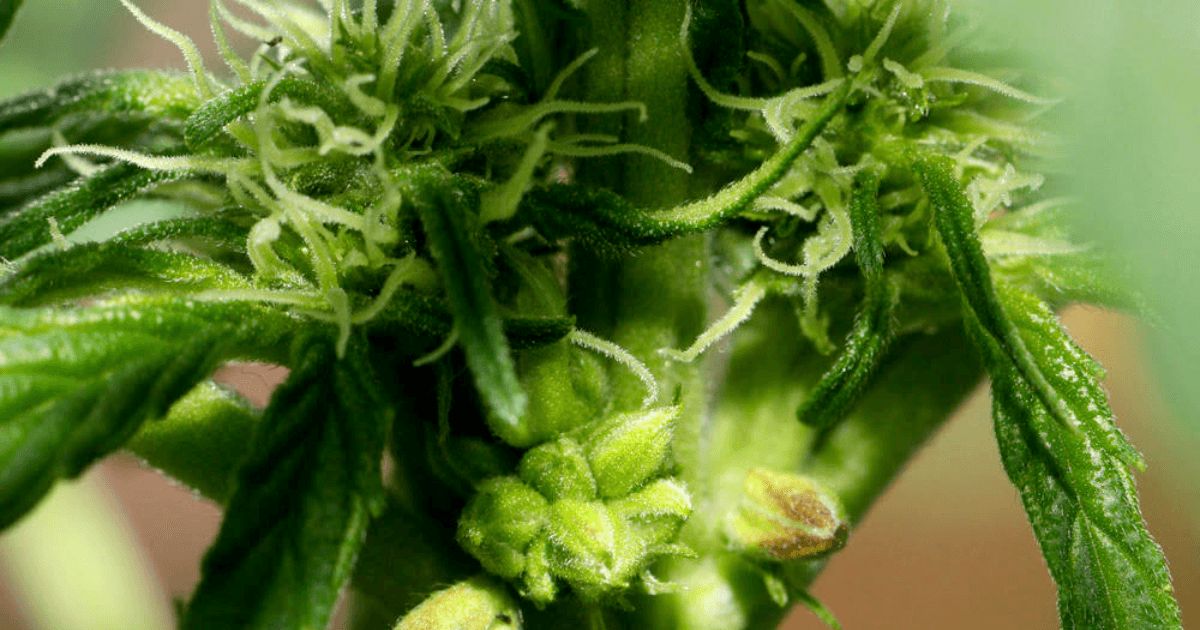
Hermaphroditism in cannabis plants refers to when a plant develops both male and female flowers. This can happen due to genetic factors or environmental stressors like light leaks, nutrient deficiencies, or temperature fluctuations during the flowering stage.
Explanation of hermaphroditism in cannabis plants
Cannabis plants are naturally dioecious, meaning each plant is distinctly male or female. However, sometimes genetics or environmental factors can trigger a female plant to grow male flowers along with its female buds. This causes the plant to become a hermaphrodite.
The male flowers that develop on a hermaphrodite plant are called "bananas" due to their elongated, banana-like shape. These bananas will open and release pollen that can pollinate any nearby female plants.
Impact of hermaphrodite plants on cultivation and breeding
The presence of hermaphrodite cannabis plants can wreak havoc on a cultivation. When a hermie releases its pollen, any female plants pollinated will stop putting energy into bud production and instead focus on producing seeds. This significantly reduces the yield and potency of the crop.
Additionally, the seeds produced by a pollinated female will likely express intersex traits as well, resulting in more hermaphrodite plants down the line. This can quickly render a strain unusable for cultivation purposes.
Many growers immediately remove any hermies they detect to prevent pollination issues. However, the pollen can sometimes pollinate plants before the hermie is spotted. Careful monitoring, especially during the flowering stage, is essential to catch hermaphrodites early.
Some breeders will intentionally create feminized seeds using hermaphrodite plants. But extreme care must be taken to prevent accidentally releasing viable pollen that could contaminate outdoor crops or ruin indoor gardens.
Overall, while hermaphroditic traits can occasionally be useful for breeding, most growers try to avoid working with hermies due to the high risk of crop-damaging pollination events.
Pollination Process
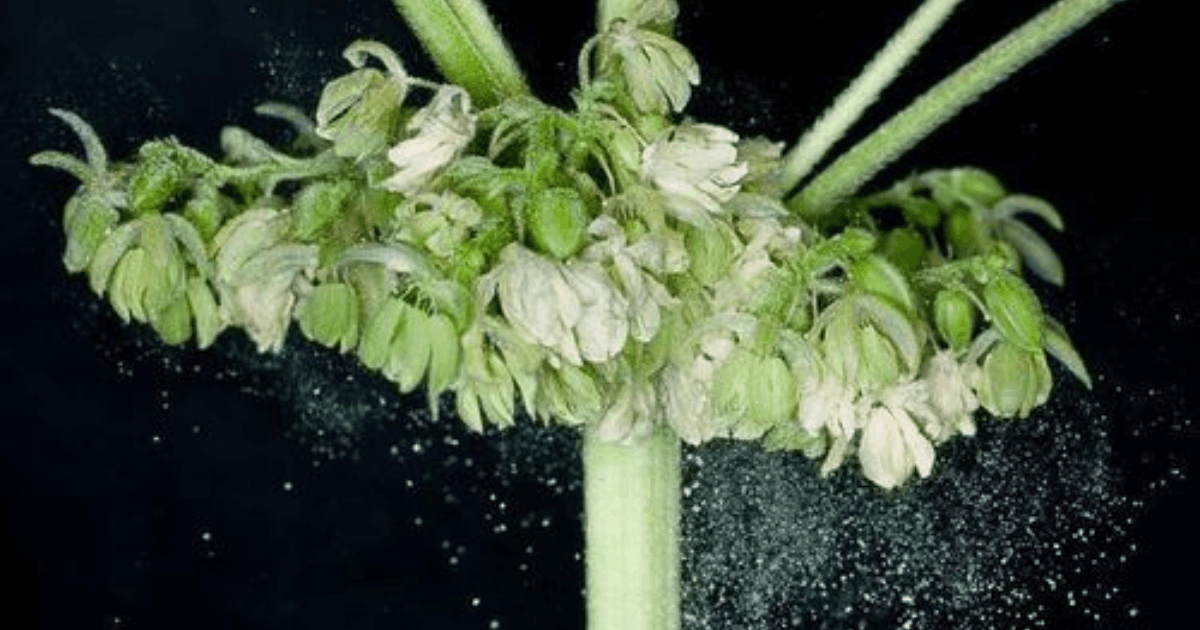
The pollination process in cannabis plants is critical for reproduction and seed production. It begins when male plants release pollen that is carried by wind or insects to female plants. Once pollen reaches the female flowers, fertilization can occur, resulting in seed development.
How male plants pollinate female plants
Male cannabis plants produce pollen sacs that burst open during flowering, releasing thousands of pollen grains into the air. A single male flower can produce over 350,000 pollen grains that get dispersed by wind, insects, or simply falling onto nearby female plants by gravity.
If this pollen reaches the white, hair-like stigmas of female flowers, it will germinate and grow down the stigma to reach the ovule. This is where fertilization takes place, allowing the male genetics to fuse with the female plant's eggs.
Consequences of pollination for crop yield and potency
If female cannabis plants get pollinated, they shift energy and resources away from producing high levels of THC and CBD and focus more on seed production. This can significantly reduce the overall yield and potency of the harvested marijuana.
Additionally, pollinated plants tend to have lower terpene levels, less dense buds, and smaller calyxes. The timing of pollination also plays a role - early pollination has more detrimental effects on yield and potency compared to later pollination closer to harvest.
To avoid reductions in quality and yield, most growers try to prevent pollination by removing all male plants and ensuring females remain unfertilized. Any accidental pollination should be avoided, especially early in flowering.
In summary, pollination redirects female cannabis plants' energy towards reproduction over resin and cannabinoid production. Keeping a crop "sinsemilla" (Spanish for without seeds) is critical for maximizing yields.
Cultivation Techniques
There are several key methods for separating male and female cannabis plants during cultivation. Many growers will identify and remove male plants early on to prevent pollination of the more desirable female plants. Common techniques include:
Manual Separation
- Carefully inspect plants during the pre-flowering stage for signs of sex, separating any identified males
- Use spatial separation within the grow area, putting male and female plants in different marked sections
- Employ physical barriers between male and female plants to contain pollen spread
Advanced Genetic Selection
- Use feminized seeds which will almost always develop into female plants
- Breed plants over successive generations to stabilize desired traits including high female tendency
- Leverage hybrid strains with genetics making them less prone to developing male sex organs
Cloning is also a pivotal technique for quality cannabis cultivation. Clones from proven top-performing female plants will be genetically identical copies with the same desirable attributes. Benefits of cloning include:
- Bypassing the seedling stage for faster harvests
- Eliminating male plants and preserving elite female genetics
- Ensuring uniform growth and potency across the crop
Overall, manually separating male and female plants, using advanced breeding methods, and leveraging cloning allow growers to optimize cultivation conditions for high-quality female cannabis.
Harvesting Concerns

Knowing when to harvest cannabis plants is critical for maximizing yield and potency. Male plants can generally be harvested earlier than females since they are not producing buds. Females should be harvested when the trichomes on the buds turn milky white or amber, indicating peak THC levels.
Timing differences in harvesting male vs female plants
Male cannabis plants can be harvested as soon as they begin shedding pollen, which usually occurs 2-4 weeks into the flowering stage. Since males do not produce buds, there is no need to leave them growing any longer. Females take considerably longer to mature - around 8-10 weeks. Growers must check the trichomes regularly under magnification as harvest time approaches to identify peak THC production.
Implications for growers in terms of yield and quality
For growers focused on producing buds for consumption, female plants are essential. Although males and hermaphrodites can pollinate females, this will result in seed production and lower THC levels. Unpollinated female plants put all their energy into resin and bud production rather than seeds, leading to higher yields and potency.
Additionally, separating male and female plants prevents accidental pollination. Even a few male plants can pollinate an entire outdoor crop, drastically reducing its value. Careful monitoring, early removal of males, and proper isolation are critical to protect quality and profits.
Legal Considerations in the UK
Cannabis cultivation is illegal in the UK without a license. The maximum sentence for cultivation of cannabis plants is 14 years imprisonment or a fine or both. It is also illegal to cultivate industrial hemp without a license, which requires both cultivation and possession to be authorized.
Overview of UK laws regarding cannabis cultivation
All cultivation of cannabis plants is illegal in the UK under the Misuse of Drugs Act 1971. Cannabis is a Class B controlled substance. Cultivating industrial hemp also requires a license from the Home Office. The license covers both the cultivation and possession of industrial hemp plants.
Gender-specific legal implications for cannabis cultivation in the UK
There are no gender-specific legal implications for illegally cultivating cannabis in the UK. Both male and female plants are equally illegal to cultivate without a license. For licensed industrial hemp cultivation, male plants may need to be separated or removed to prevent unwanted fertilization of the female plants.
- Licensed industrial hemp farmers must prevent pollination in order to maximize production of CBD or other compounds in the female plants.
- Male plants may be grown in separate areas or removed to prevent fertilizing the female plants.
So while there are no explicit legal differences in cultivating male or female plants, legal hemp cultivation does require managing males to protect the yield and potency of females.
Advanced Breeding Strategies
Selective breeding is a key technique used to develop new cannabis strains with desired traits. By carefully choosing parent plants that exhibit certain favorable characteristics, breeders can produce offspring that reliably express those traits. Some important traits targeted through selective breeding include:
- High THC or CBD content
- Specific cannabinoid and terpene profiles
- Pest and disease resistance
- Faster flowering times
- Higher yields
- Appearance and aroma
When crossing two different strains, breeders analyze the genetics of each parent plant and predict how their traits may combine in the offspring. Keeping detailed records allows breeders to refine strains over multiple generations until the desired characteristics stabilize.
Feminized Seeds
Most cannabis breeders prefer working with female plants, since only females produce the resinous buds that contain high levels of cannabinoids. Traditionally, around half of all seeds produce male plants that must be culled to avoid pollinating the females. However, advances in breeding have led to "feminized" cannabis seeds that reliably grow into productive female plants.
Breeders create feminized seeds by causing female plants to grow male flowers through stress techniques or chemical treatment. The pollen from these flowers is then used to fertilize another female. This results in nearly 100% female offspring, dramatically increasing yields for growers.
Feminized seeds have revolutionized commercial growing, as large crops can be grown from cuttings cloned from exceptional "mother plants." Maintaining superior plant genetics across growth cycles is an essential strategy for large-scale cannabis cultivation.
Conclusion
As we have seen throughout this guide, understanding the differences between male and female cannabis plants is crucial for successful cultivation. A few key takeaways:
- Male plants produce pollen sacs while females produce the coveted buds containing high levels of CBD and THC.
- Identifying plant gender early on through pre-flowering indicators allows growers to separate males from females to prevent unwanted pollination.
- While male plants play an important role in breeding programs, the focus of most growers is maximizing the yield and potency of female plants.
- Employing cloning and growing feminized seeds helps ensure female-only crops for CBD and THC production.
- Proper timing of harvest is critical, with males typically being removed first to avoid pollinating females.
As with any endeavor, there is always more to learn when cultivating cannabis. I encourage readers to continue researching best practices for identifying and managing male and female plants. Most importantly, be sure to check your local laws and regulations to cultivate cannabis legally and responsibly.
If this guide has piqued your interest in the science behind these amazing plants, consider exploring specialized texts or taking a cannabis cultivation course. And as always, happy growing!

